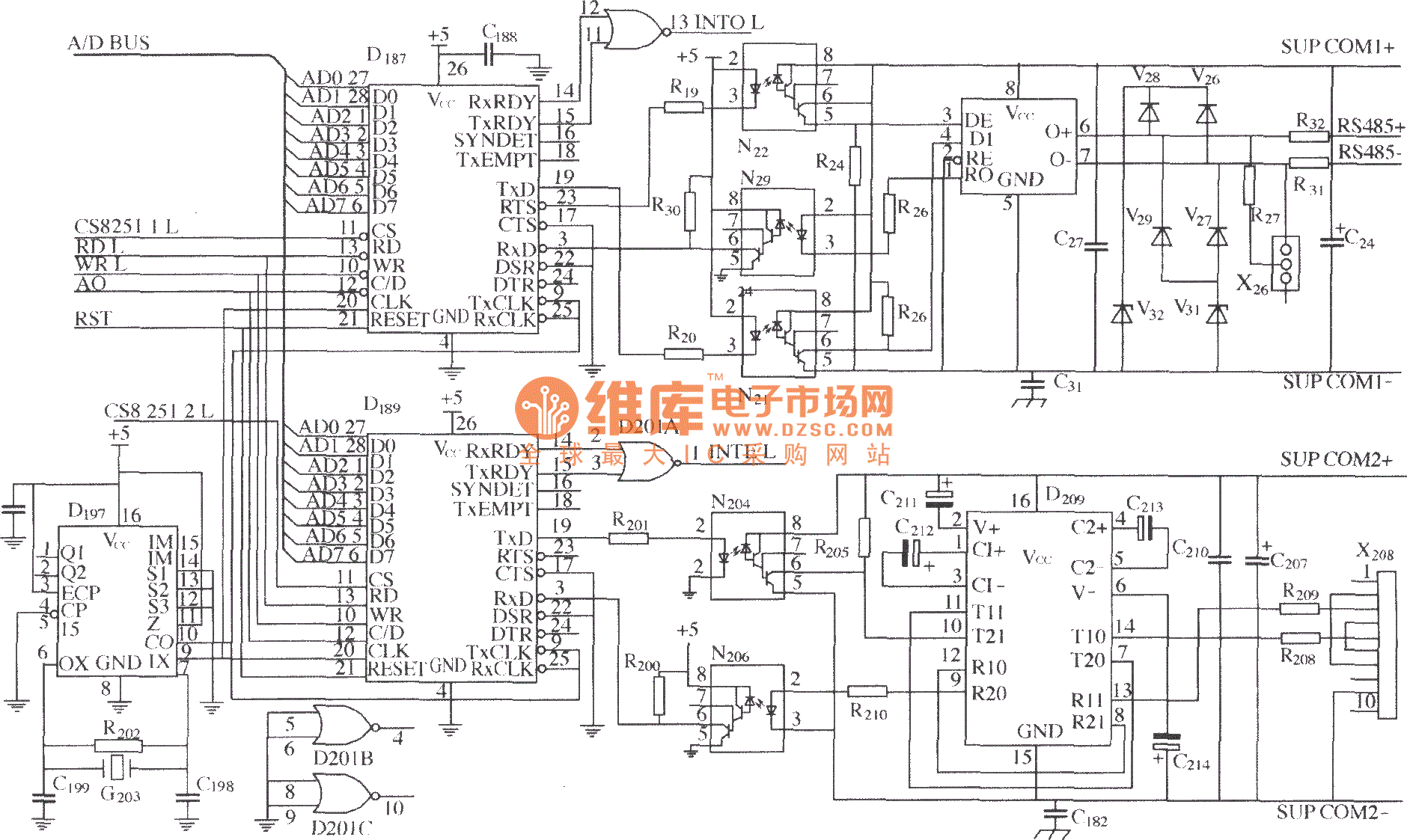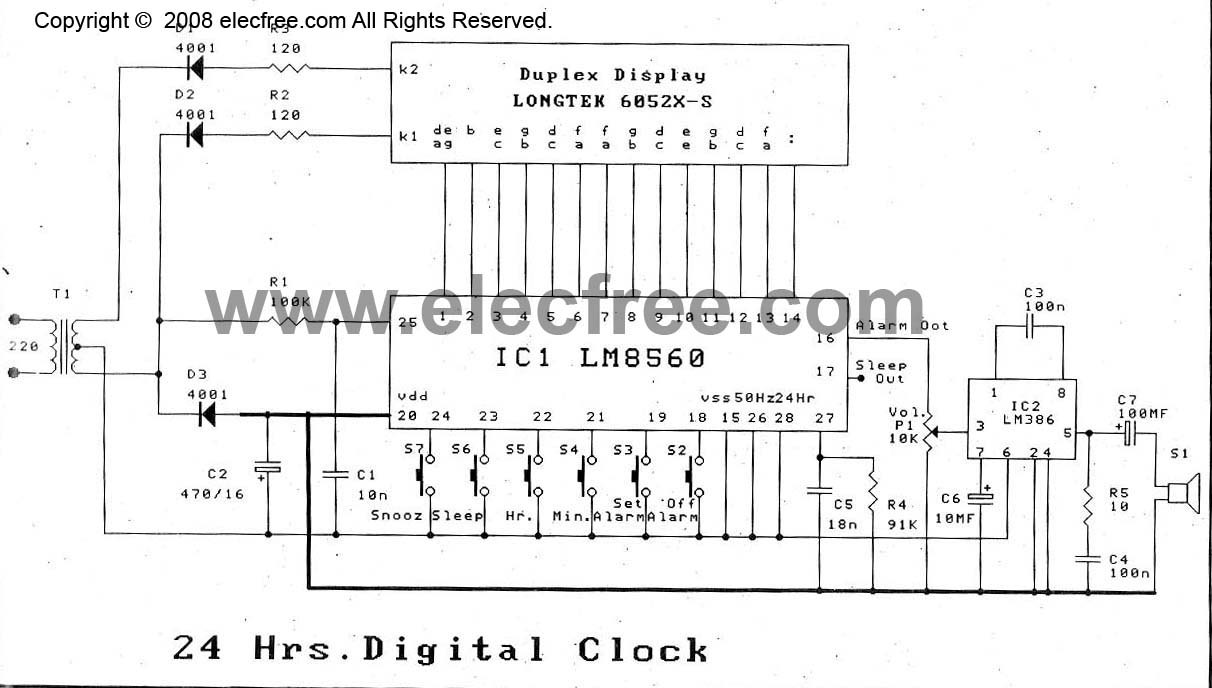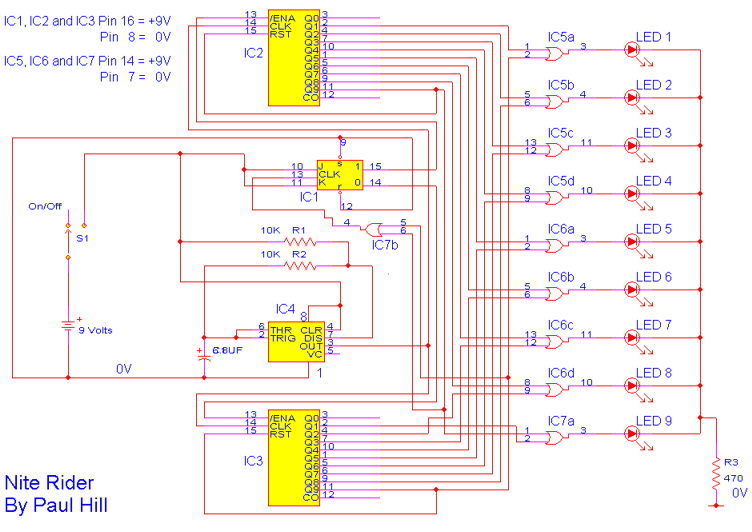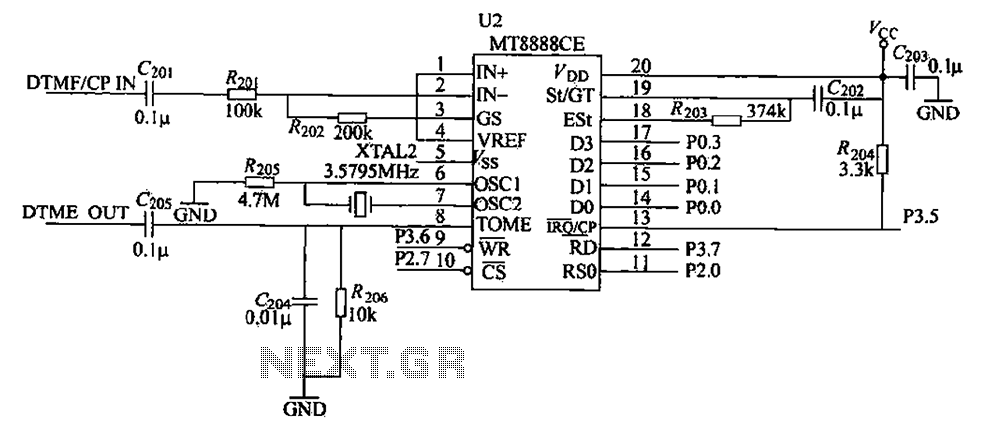
DK04 Monitoring Module and Computer communication interface circuit

As shown in the figure, D187 is a UART with its RX/TX signals connected through optocouplers N21, N22, and N29, providing complete optoelectronic isolation for the RS-485 communication interface receiver/transmitter D28 and microprocessor D211. D197 serves as a generator, and the current communication rate is 9600 bits per second. D189 is another universal asynchronous receiver-transmitter.
The described circuit utilizes several key components to ensure reliable communication in an isolated environment. The UART (Universal Asynchronous Receiver-Transmitter) D187 is responsible for serial communication, enabling data exchange between the microprocessor D211 and the RS-485 interface. The RX and TX signals from D187 are routed through optocouplers N21, N22, and N29, which serve to electrically isolate the microprocessor from the RS-485 communication line. This isolation is crucial for protecting sensitive components from voltage spikes and ground loops that may occur in industrial environments.
The RS-485 communication interface, represented by D28, is designed for long-distance data transmission and can support multiple devices on the same bus. This interface is particularly useful in applications requiring robust communication over significant distances, such as in industrial automation and control systems. The microprocessor D211 processes the data received from the RS-485 interface and can send commands back through the same channel.
D197 functions as a clock or timing generator, establishing a communication rate of 9600 bits per second. This baud rate is a standard choice for many serial communication applications, balancing speed and reliability.
Additionally, D189 represents another UART, which may be utilized for additional communication channels or redundancy in the system. This configuration allows for flexible data handling and can enhance the system's overall performance by enabling simultaneous communication paths.
This circuit exemplifies a well-designed approach to achieving optoelectronic isolation while maintaining effective data communication, ensuring that the microprocessor operates safely and efficiently in conjunction with RS-485 devices.As shown in figure, D187 is an UART, it`sRX / TX signalconnectedonoptocoupler N21, N22 and N29, so that put the RS-485communication interface receiver / transmitter D28and microprocessor D211 completely optoelectronicisolated. D197 is a generator, the currently communication rate is 9600bit / s. D189 is another universal asynchronous receiver transmitter. Op.. 🔗 External reference
The described circuit utilizes several key components to ensure reliable communication in an isolated environment. The UART (Universal Asynchronous Receiver-Transmitter) D187 is responsible for serial communication, enabling data exchange between the microprocessor D211 and the RS-485 interface. The RX and TX signals from D187 are routed through optocouplers N21, N22, and N29, which serve to electrically isolate the microprocessor from the RS-485 communication line. This isolation is crucial for protecting sensitive components from voltage spikes and ground loops that may occur in industrial environments.
The RS-485 communication interface, represented by D28, is designed for long-distance data transmission and can support multiple devices on the same bus. This interface is particularly useful in applications requiring robust communication over significant distances, such as in industrial automation and control systems. The microprocessor D211 processes the data received from the RS-485 interface and can send commands back through the same channel.
D197 functions as a clock or timing generator, establishing a communication rate of 9600 bits per second. This baud rate is a standard choice for many serial communication applications, balancing speed and reliability.
Additionally, D189 represents another UART, which may be utilized for additional communication channels or redundancy in the system. This configuration allows for flexible data handling and can enhance the system's overall performance by enabling simultaneous communication paths.
This circuit exemplifies a well-designed approach to achieving optoelectronic isolation while maintaining effective data communication, ensuring that the microprocessor operates safely and efficiently in conjunction with RS-485 devices.As shown in figure, D187 is an UART, it`sRX / TX signalconnectedonoptocoupler N21, N22 and N29, so that put the RS-485communication interface receiver / transmitter D28and microprocessor D211 completely optoelectronicisolated. D197 is a generator, the currently communication rate is 9600bit / s. D189 is another universal asynchronous receiver transmitter. Op.. 🔗 External reference





